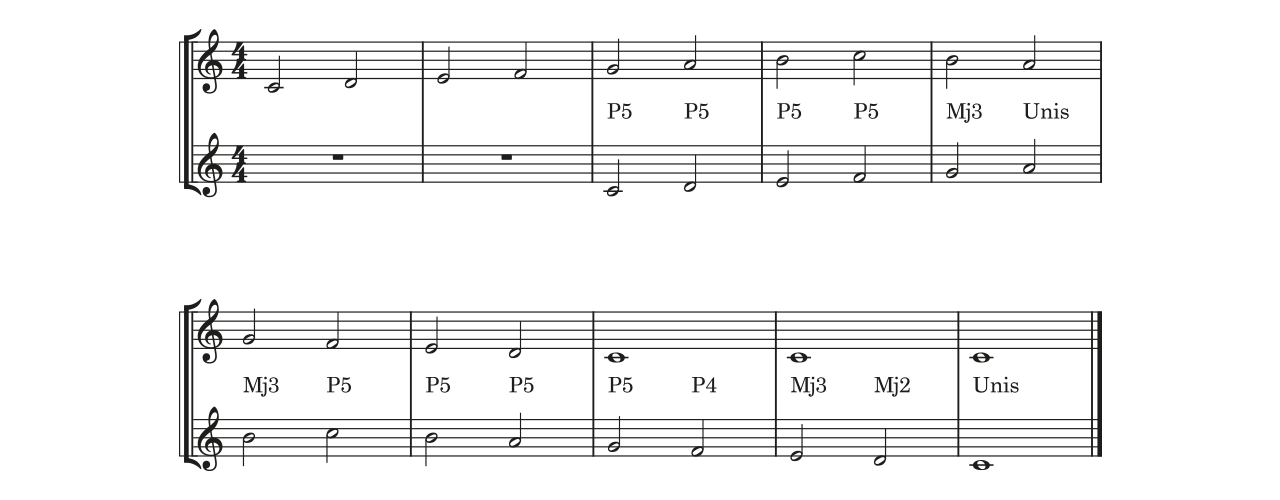Warm-up Tips For Ensembles
Warm-up Tips For Ensembles

How to develop better tone, intonation & ensemble pulse
Good tone, intonation, and a unified sense of internal pulse are foundational skills of effective ensemble music making. In addition to developing these skills in repertoire being rehearsed for performance, the ensemble warm-up particularly lends itself to specific focus on this important task. Here are some helpful tips to develop these skills.
The importance of listening
A primary educational strategy that can be fostered across all of the rehearsal process is the careful guidance and development of improved listening skills from the players. This is equally (or more) applicable to the warm-up process. Ensemble teachers are encouraged to find ways that require students to listen for the desired result and evaluate, by their focussed listening, issues that need to be addressed, come up with ways to address them, and then evaluate results. It is too easy, and perhaps less educationally valuable, for conductors to provide all the answers or potential solutions. While this approach is the typical model for conductors of professional and high level ensembles, it could be argued that conductors working at educational or community levels will help their ensembles develop to a much greater extent if their approach is targeted at developing the musicianship skills of their players, by strategies that require player listening/evaluation to make the desired improvements.
Key steps in the warm-up process for tone and intonation:
1. Start with posture
Be sure you demand excellent posture, hand positions, instrument placement, etc. from your players before they even think about producing a sound. Any compromise on this aspect inevitably compromises the tone produced (to say nothing of reinforcing a bad habit by the players). You have to be dogged in pursuit of this—students reverting to less than optimum posture is never far away it seems.
2. Focus on breath
Once optimum posture is established, taking a good breath is the next critical fundamental, especially for wind and brass musicians. The way the conductor breathes will be emulated by the players (you don’t have to teach this specifically, it just happens if they watch you), and the weight/quality of tone will reflect this breath. It is for this reason it’s advocated, with rare exceptions for specific purposes, to only giving a single preparatory gesture with a prep breath (i.e. no multiple beats before sound). The single prep breath also applies to conducting strings and percussion. Good musicians breathe appropriately for preparation and phrasing purposes regardless of instrument – it helps them “feel” the music internally and produce an appropriate sound. In warm-ups using long tones try leading the ensemble to produce sounds that reflect different qualities of the breath intake by varying the depth, size, weight, etc. of the gesture.
3. Address tonal balance
Assuming posture and breath intake are optimum for best possible tone production, appropriate tonal balance can then be addressed. If members of the ensemble are “sticking out” of the texture, utilise strategies that require them to listen for that and fix it using their ears. For example, a statement such as the following can lead to player adjustment based on their listening: “Can anyone hear any particular (tone colours/sections/players) sticking out of the texture?” Then have the ensemble play again with no further advice from the conductor on the desired solution. Now that players are listening more actively for balance, the issue is always improved or often even completely solved.
You can also ask more specifically targeted questions to the same end (for players or sections that need to balance down or up to overall ensemble), like: “How did you feel about your balance with the rest of the ensemble?” This doesn’t tell the player addressed to play more or less but, significantly, to listen for their balance in relation to everyone else. The player will typically then adjust (usually always in the right direction if not totally as desired) based on what they are hearing as opposed to the conductor telling them to play with more or less sound. This is a transferable skill – in future pieces, different acoustic environments, etc.
4. Listen for intonation
The key, once again, is using strategies that make the players accountable for listening and working to solve tuning issues using their ears. When intonation clearly needs addressing, avoid telling the students their particular pitch tendencies. Rather, draw their aural attention to pitch matching. Having students play their pitch in comparison to an accurate reference pitch (e.g. a tuba, keyboard bass, oboe, etc.) and then having them at least attempt to judge if their note is higher (sharp) or lower (flat) in comparison, is a critical first step. They may not always get this right, but they need to try if they are going to develop this skill. Singing is also a key ingredient for developing better audiation (inner hearing) of the note to be produced. One easy warm up in this regard is as follows (use whatever scale suits your purpose):
PLAY Scale deg 1. / SING Scale deg. 2 / PLAY Scale deg. 2 / SING Scale deg. 3 / PLAY Scale deg. 3 / etc.
You can also have ensembles sing the first note of a scale (tonic) while showing your index finger as “1” and then have them audiate silently (i.e. in their heads only) as you indicate moving up the scale by adding fingers. They then have to sing aloud the degree you stop at. You could then have them find (and sing without help) the tonic degree from wherever you stopped in the scale to help them keep a tonic reference in their heads. The useful extent of this strategy is only limited by your imagination and the ensemble’s capabilities.
It’s also helpful to play a major scale as a round in just two parts, with the second part starting when the first part gets to the fifth note. This makes for a round with a lot of perfect fifth intervals (the next most important interval for tuning after unisons/octaves), as well as two major thirds (with each group having a turn at being the bottom and top of the third interval), and one unison (at the 6th scale degree). This is a great warmup to focus the players’ ears on intonation.
It looks like this:

You can read more about intonation here
5. Feeling the pulse
A foundational goal for ensembles at any level should be the ability to feel and maintain a regular pulse internally, without a conductor. The only time they give full responsibility for pulse over to the conductor is for the setting (or changing) of the tempo. When the pulse is established and constant, the conductor’s gestures regarding beat should merely be confirming (or reinforcing) what the players are already feeling internally, as a steady pulse holding the music together. As a result, it’s encouraged to utilise strategies that require and test this concept – often with the conductor’s role being to guide/listen and not conduct. It’s recommended to do at least some of this training without instruments – i.e. just using voice, clapping, etc. When there are pulse issues, the necessary requirements to think about how to manipulate the instrument (hands, fingers, articulation, bowing, LH placement, embouchure, correct notes, etc.) often confound paying close enough attention to the internal pulse that you are trying to address.
Exercises for addressing ensemble pulse
In this exercise students count aloud consecutive beats, while incrementing the number of silent counts as the exercise progresses. It would sound like the following where numbers in parentheses are silent. No audible foot tapping allowed!
1,2,3,4 |1,2,3,4 |1,2,3 (4) |1,2,3,(4) |1,2,(3),(4) |1,2,(3) (4) |1,(2),(3),(4) |1,(2),(3) (4) |
Complexity can be increased by using counts greater than 4 and/or using slower tempos.
The following exercise is along similar lines and uses instruments playing a scale and replacing notes with rests one by one:

In all of the above exercises addressing tone, pitch and pulse, the reader is encouraged to find ways to modify/adapt the underlying concepts to create a variety of warm-ups that work toward the same goal of requiring students to use their listening skills to evaluate the issue being addressed, rather than having the director telling them the information. The payoff in teaching transferable skills in this regard is well worth the effort and helps give the students more responsibility for their own musical development.
WORDS BY: Dr. Rob McWilliams

WORDS BY: Dr. Rob McWilliams
Rob McWilliams, Ph. D., has worked in instrumental music education and ensemble direction at secondary and tertiary levels in Australia and the USA for more than 30 years. He is currently the Education Outreach Clinician for Yamaha Music Australia.
